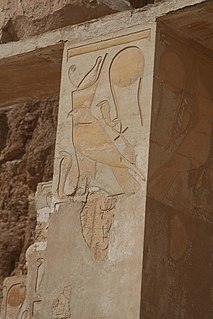 W
WWadjet, known to the Greek world as Uto or Buto among other names including Wedjat, Uadjet, and Udjo, was originally the ancient local goddess of the city of Dep. It became part of the city that the Egyptians named Per-Wadjet and the Greeks called Buto, which was an important site in prehistoric Egypt and the cultural developments of the Paleolithic. There was also a Per-Wadjet in Upper Egypt.
 W
WButo, Butus or Butosus was an ancient city located 95 km east of Alexandria in the Nile Delta of Egypt. What in classical times the Greeks called Buto stood about midway between the Taly (Bolbitine) and Thermuthiac (Sebennytic) branches of the Nile, a few kilometers north of the east-west Butic River and on the southern shore of the Butic Lake.
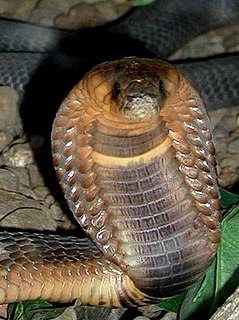 W
WThe Egyptian cobra is a species of venomous snake in the family Elapidae, classified within the subgenera Uraeus. It averages roughly 1.4 metres (4.6 ft), with the longest recorded specimen measuring 2.59 metres (8.5 ft).
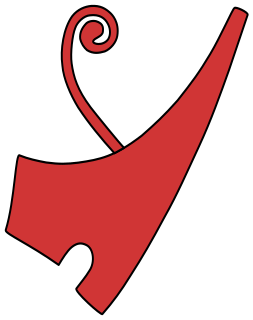 W
WDeshret, from Ancient Egyptian, was the formal name for the Red Crown of Lower Egypt and for the desert Red Land on either side of Kemet, the fertile Nile river basin. When combined with the Hedjet of Upper Egypt, it forms the Pschent, in ancient Egyptian called the sekhemti.
 W
WThe Eye of Horus, also known as wadjet, wedjat or udjat, is an ancient Egyptian symbol of protection, royal power, and good health. The Eye of Horus is similar to the Eye of Ra, which belongs to a different god, Ra, but represents many of the same concepts.
 W
WThe Eye of Ra or Eye of Re is a being in ancient Egyptian mythology that functions as a feminine counterpart to the sun god Ra and a violent force that subdues his enemies. The Eye is an extension of Ra's power, equated with the disk of the sun, but it also behaves as an independent entity, which can be personified by a wide variety of Egyptian goddesses, including Hathor, Sekhmet, Bastet, Wadjet, and Mut. The Eye goddess acts as mother, sibling, consort, and daughter of the sun god. She is his partner in the creative cycle in which he begets the renewed form of himself that is born at dawn. The Eye's violent aspect defends Ra against the agents of disorder that threaten his rule. This dangerous aspect of the Eye goddess is often represented by a lioness or by the uraeus, or cobra, a symbol of protection and royal authority. The Eye of Ra is similar to the Eye of Horus, which belongs to a different god, Horus, but represents many of the same concepts. The disastrous effects when the Eye goddess rampages out of control and the efforts of the gods to return her to a benign state are a prominent motif in Egyptian mythology.
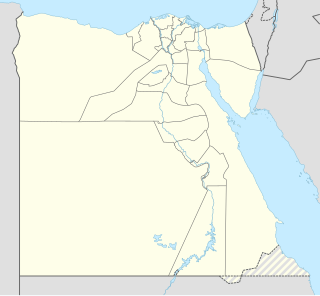 W
WPer-Wadjet was an Ancient Egyptian town in the 10th Upper Egyptian nome. The ancient town is identical with the modern village Kom Ishqau. Per-Wadjet is known from Egyptian sources since the New Kingdom. It was a cult place for Hathor, who was here identified with Wadjet. The Greeks identified Hathor with Aphrodite and called the town Aphroditopolis or Aphrodito. In Greek and Roman times the town was sometimes the nome capital. In Kom Ishqau were found the papyri of Dioscorus of Aphrodito, who lived there in the 6th century A.D. These papyri are an important source for life in Byzantine Egypt. A long-lost 2.200 year-old temple with words linked to Ptolemy IV Philopator was accidentally found during drilling work on a sewage project by the Egyptian archaeological mission in the village in early September 2019. Temple stones for installing the sewage pumps, limestone wall remnants and ground floor were also revealed during the excavation. Inscriptions described Hapi, the God of the Nile, presenting offerings of varied animal and birds in the walls of the temple.
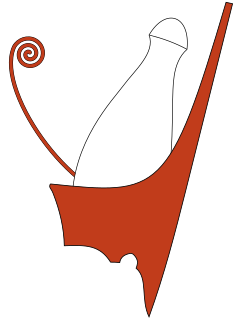 W
WThe pschent was the double crown worn by rulers in ancient Egypt. The ancient Egyptians generally referred to it as sekhemty (sḫm.ty), the Two Powerful Ones. It combined the White Hedjet Crown of Upper Egypt and the Red Deshret Crown of Lower Egypt.
 W
WRenenūtet was a goddess of nourishment and the harvest in ancient Egyptian religion. The importance of the harvest caused people to make many offerings to Renenutet during harvest time. Initially, her cult was centered in Terenuthis. Renenutet was depicted as a cobra, or as a woman with the head of a cobra.
 W
WIn Ancient Egyptian texts, the "Two Ladies" was a religious euphemism for the goddesses Wadjet and Nekhbet, two deities who were patrons of the ancient Egyptians and worshiped by all after the unification of its two parts, Lower Egypt, and Upper Egypt. When the two parts of Egypt were joined together, there was no merger of these deities as often occurred with similar deities from various regions and cities. Both goddesses were retained because of the importance of their roles and they became known as the Two Ladies, who were the protectors of unified Egypt.
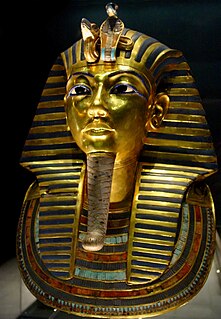 W
WThe Uraeus is the stylized, upright form of an Egyptian cobra, used as a symbol of sovereignty, royalty, deity and divine authority in ancient Egypt.